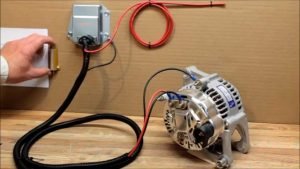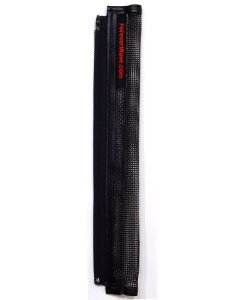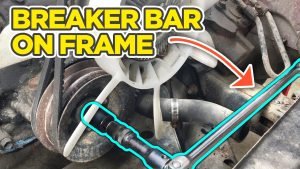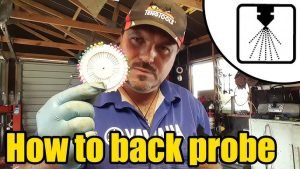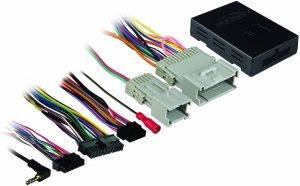Automotive engines are complex systems with many components that work together to power the vehicle. One important component is the rear main seal, which is located at the rear of the engine and seals the crankshaft where it exits the engine block. The rear main seal helps prevent oil from leaking out of the engine, which can damage other parts and cause the engine to fail.
When it comes to rear main seals, there are two main types: 1 piece and 2 piece. Both types serve the same purpose, but they have some key differences in terms of design, installation, and performance.
In this blog post, we’ll explore the differences between 1 piece and 2 piece rear main seals and help you determine which type may be best for your vehicle. We’ll start by defining each type of seal and explaining how they work. Then, we’ll discuss the advantages of each type and compare them based on factors like installation process, cost, and performance. Finally, we’ll offer some recommendations for choosing between 1 piece and 2 piece rear main seals based on factors like engine type, vehicle use, and budget.
Whether you’re a mechanic, a car enthusiast, or a vehicle owner looking to replace a rear main seal, this blog post will provide you with valuable information to help you make an informed decision. So let’s dive in and learn more about 1 piece and 2 piece rear main seals!
Contents
What is a 1 piece rear main seal?
A 1 piece rear main seal is a type of seal that is designed to seal the crankshaft at the rear of the engine block in one piece. It is typically made of a synthetic rubber material, such as Viton or Nitrile, that is designed to be flexible and resistant to heat, oil, and other fluids.
The primary advantage of a 1 piece rear main seal is that it is less prone to oil leaks than a 2 piece seal. Because it is a single piece, there are no joints or seams that can weaken over time and allow oil to seep out. Additionally, a 1 piece rear main seal is typically easier to install than a 2 piece seal, as it can be inserted into the engine block without the need for additional components.
However, there are some potential disadvantages to using a 1 piece rear main seal. For example, it may not be as durable as a 2 piece seal and may not be able to withstand the high pressures that can be generated in some engines. Additionally, if the seal fails, it may require more extensive repairs than a 2 piece seal, as the engine may need to be partially disassembled to replace it.
Overall, a 1 piece rear main seal is a good choice for many engines, particularly those that are not subject to extreme conditions or high engine pressures. It is a reliable and cost-effective option that can help prevent oil leaks and keep your engine running smoothly.
What are the advantages and disadvantages of using a 2 piece rear main seal compared to a 1 piece?
The bonded brake shoe differences between a 2 piece rear main seal and a 1 piece can greatly impact performance. The 2 piece offers easier installation and replacement, while the 1 piece provides better protection against leaks. Both have their advantages and disadvantages, so consider your specific needs before making a decision.
What is a 2 piece rear main seal?
A 2 piece rear main seal is a type of seal that is designed to seal the crankshaft at the rear of the engine block using two separate components. The first component, known as the seal retainer, is a metal housing that fits into the engine block and holds the seal in place. The second component is the actual seal, which is typically made of a synthetic rubber material, such as Viton or Nitrile, that is designed to be flexible and resistant to heat, oil, and other fluids.
The primary advantage of a 2 piece rear main seal is that it offers better sealing properties than a 1 piece seal. Because the seal retainer is a separate component, it can provide additional support and pressure on the seal, helping to ensure a tight seal between the crankshaft and engine block. Additionally, a 2 piece rear main seal is typically more durable than a 1 piece seal and can withstand higher engine pressures.
However, there are some potential disadvantages to using a 2 piece rear main seal. For example, it may be more difficult to install than a 1 piece seal, as it requires two separate components to be inserted into the engine block. Additionally, a 2 piece seal may require more maintenance than a 1 piece seal, as the seal retainer may need to be periodically removed and inspected for wear.
Overall, a 2 piece rear main seal is a good choice for engines that are subject to high pressures or extreme conditions. It offers better sealing properties and durability than a 1 piece seal, but may require more maintenance and be more difficult to install. If you’re unsure which type of seal is right for your engine, consult with a mechanic or automotive expert for guidance.
Comparison between 1 piece and 2 piece rear main seals
When deciding between a 1 piece and 2 piece rear main seal, there are several factors to consider. Here’s a comparison table that highlights some of the key differences between the two types of seals:
| Factor | 1 piece seal | 2 piece seal |
| Design | Single piece | Two separate components |
| Sealing properties | Good | Better |
| Durability | Fair | Good |
| Ease of installation | Easy | More difficult |
| Maintenance requirements | Low | Higher |
| Cost | Lower | Higher |
As you can see, both types of seals have their own advantages and disadvantages. A 1 piece seal is typically easier to install and less expensive, but may not offer the same level of durability and sealing properties as a 2 piece seal. A 2 piece seal is more difficult to install and may require more maintenance, but offers better sealing properties and is more durable.
Ultimately, the choice between a 1 piece and 2 piece rear main seal will depend on several factors, including the specific engine and vehicle, as well as personal preference and budget. If you’re unsure which type of seal is right for your needs, consult with a mechanic or automotive expert for guidance.
Regardless of which type of seal you choose, it’s important to ensure that it is properly installed and maintained to prevent oil leaks and ensure optimal engine performance. With the right rear main seal and proper care, your engine can continue to run smoothly for years to come.
Which type of rear main seal is right for you?
As an automotive expert, I have seen firsthand the importance of choosing the right rear main seal for your engine. While both 1 piece and 2 piece seals have their own advantages and disadvantages, there are several factors to consider when making your decision.
First and foremost, it’s important to consider the specific engine and vehicle you’re working with. Some engines may require a specific type of seal, so be sure to consult your vehicle’s owner’s manual or a mechanic for guidance.
If you frequently drive in extreme conditions or subject your engine to high pressures, a 2 piece seal may be a better choice for you. These seals offer better sealing properties and are more durable, making them ideal for high-performance applications.
On the other hand, if you’re a DIY mechanic or plan to install the seal yourself, a 1 piece seal may be a better choice. These seals are typically easier to install and require less maintenance, making them a great option for those who want to save time and money.
Another important factor to consider is your budget. While a 2 piece seal may offer better sealing properties and durability, it’s also typically more expensive than a 1 piece seal. If you’re on a tight budget, a 1 piece seal may be the way to go.
Ultimately, the right type of rear main seal for you will depend on your specific needs and preferences. If you’re still unsure which type of seal is right for you, don’t hesitate to consult with a mechanic or automotive expert for guidance.
Remember, regardless of which type of seal you choose, proper installation and maintenance are key to ensuring optimal engine performance and preventing oil leaks. With the right seal and care, you can keep your engine running smoothly for years to come.
In conclusion, choosing the right rear main seal for your engine is a crucial decision that can have a significant impact on your engine’s performance and longevity. While both 1 piece and 2 piece seals have their own unique advantages and disadvantages, the decision ultimately comes down to your specific needs and preferences.
If you frequently drive in extreme conditions or subject your engine to high pressures, a 2 piece seal may be the better choice due to its better sealing properties and durability. On the other hand, if you’re a DIY mechanic or looking for a more affordable option, a 1 piece seal may be the way to go.
Regardless of which type of seal you choose, it’s important to remember that proper installation and maintenance are key to ensuring optimal engine performance and preventing oil leaks. By doing your research, consulting with a mechanic or automotive expert, and carefully considering your needs and preferences, you can make an informed decision and keep your engine running smoothly for years to come.
Affiliate Disclosure: As an Amazon Associate, I earn from qualifying purchases made through links on this site.



